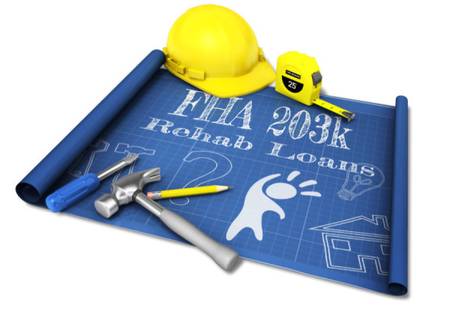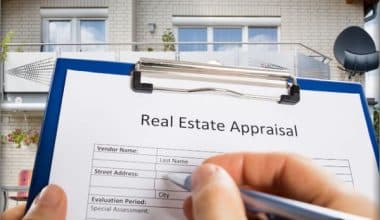Homebuyers and homeowners can use an FHA 203(k) rehab loan to fund both the buying or refinancing of a home and its rehabilitation. Read on as I show you the 203K Fha Rehab Loan, Requirements, as well as Qualifications for Lenders.
FHA 203(k) Rehab Loan
Rehab loans from the Federal Housing Administration (FHA) allow homebuyers to acquire or refinance a primary residence and repair it with one straightforward loan application.
Through the use of a home rehab loan, prospective homeowners can avoid the anxiety and financial uncertainty that comes with upgrading their own house from the outset.
Can I Get a Rehab Loan to Fix Up My House?
A homeowner must meet specific requirements in order to get FHA 203(k) rehab home loan.
Included in these needs are the following:
- Locating a home that may require minor repairs or modernization
- Locating a reputable lender
- Achieving the minimal credit score and debt-to-income ratio required by lenders, as well as providing documentation of one’s ability to pay
- Determining the closing date will
Types of 203k FHA Rehab Loan
There are a variety of 203k FHA rehab loan options available to consumers
It’s important to know the difference between limited and standard 203(k) renovation loans when it comes to borrowing money for renovations.
#1. A Limited 203(k) loan
This is a special type of short-term loan. And huge infrastructure repairs are not eligible for this grant, which offers up to $35,000 for renovations.
#2. Standard 203(k) loan
In order to qualify, renovations must cost a minimum of $5,000 and include major structural repairs. 203(k) standard loan debtors are required to hire a HUD consultant to supervise the renovation process.
Qualifications for an FHA Rehab Loan
While the 203(k) loan has a very clear function, at its fundamental it is still an FHA loan. Conventional loans have stricter qualifications, but FHA loans have more lenient requirements and are subject to the FHA rehab loan limits.
#1. The credit score
The Fha 203k rehab loan requirements include a credit rating of at least 500, although other lenders may require a higher minimum.
#2. The first payment
One of the qualifications is that if you have a credit score of at least 580, you can get an FHA 203(k) rehab loan with just a 3.5 percent down payment. You’ll have to put down 10 percent if your credit score is between 500 and 579. Moreover, you’ll have to pay down 10% of the loan amount. State home buyer initiatives may offer down payment assistance, and financial rewards from relatives and friends are also allowed.
#3. The maximum Loan Amount
Regardless of where you reside, FHA loan restrictions range from $420,860 in low-cost counties to $970,800 in high-cost areas.
#4. Foreclosure
An FHA loan will almost always be denied if you’ve had a foreclosure within the last few years.
Advantages of a 203(k) Rehab Loan
Rehab loans are designed to help homeowners improve their existing homes or buy a home that can benefit from upgrades, repairs, or renovations. The following are the benefits of the FHA 203(k) loan.
- If you’re looking to build equity in your home, a 203(k) rehab loan is an excellent option.
- You don’t have to have excellent credit, a hefty deposit, or high-interest rates to get a loan for your home upgrades.
- Your home should reflect your personal style and demands.
- To save money, consider buying a home that is typically listed at a reduced price because of its age.
- One financing for all of your rehab needs at a low-interest rate.
- With a minimal deposit, these vehicles are
- You won’t exhaust your money attempting to come up with a deposit for a house if you have a 3.5 percent
- Because the FHA insures your mortgage, the requirements may be less stringent than for a traditional bank.
FHA 203k Rehab Loan Lenders
The FHA 203k rehab loan isn’t offered by all mortgage lenders, and not all loan officers and brokers are familiar with the process. You should only work with a company that has been approved to make this type of loan and has made many of them.
It’s always a good idea to compare different FHA rehab loan lenders to get the best deal. The lowest interest rate lender may not always be the best choice for a 203k loan.
If a lender offers a lower interest rate because of their lack of 203k rehab loan experience, it’s often preferable to accept a higher interest rate from a more experienced lender.
This is a rare case in which getting the best deal on a mortgage is not the most important consideration.
Contractors’ and lenders’ experience matters more than price when it comes to 203k loans. The ball is always in your court, I hope you choose wisely.
Drawbacks of FHA Rehab 203k loan
The 203k loan program has its advantages and disadvantages, just like any other loan program.
But there’s a price to pay for getting there. No loan is exempt from this rule, including the 203k loan. You’ll need to find reputable contractors and be extremely thorough in the paperwork they submit.
Don’t be shocked if rehab FHA loan lenders ask you to resubmit a bid two or three times because of incomplete details. You’ll also have to decide which upgrades are within your price range. That’s both fascinating and hectic at the same time. To keep the loan approval process on track, you’ll need to act quickly.
As a result, the loan application process will take longer than for a standard mortgage loan. Your paperwork requirements are rising 2 to 3 times as much as a standard loan.
Prepare for and accept that fact going into the process. Don’t expect to be the one who gets the loan closed in 15 days. Talk to the seller about your expectations and be specific.
Are you willing to put up with these minor inconveniences in order to reap the rewards? If this is the case, a 203k loan may be the best option for you.
Alternatives to home improvement loans
It is possible that the FHA 203k is not the best option for you.
For instance, basic maintenance may only require a few thousand dollars.
Alternatively, your renovation may be deemed too extravagant or expensive by FHA standards. It’s possible that you’d prefer to handle the project on your own.
A renovation loan that does not necessitate permanent mortgage insurance may be more appealing to you. At least one other option may be better suited to your situation: a loan from a credit union.
Loan Equity Home
There are two types of home equity loans: fixed-rate mortgages with higher interest rates, and variable-rate mortgages with lower interest rates. They are ideal for large-scale projects that require a large upfront investment. Even though second mortgage lenders usually lend up to 90 percent of the property’s current value, you’ll need to have some equity in your home before you start making improvements.
Home Equity Line of Credit (HELOC)
With a home equity line of credit, you can borrow as little or as much as you need. A variable interest rate is common, and you pay interest on the money you take out of the account.
As long as you don’t exceed your credit limit, you can pay it back and keep using it. There are no or few set-up costs. You must have some equity in your home to receive a HELOC, just like a second loan.
Fannie Mae HomeStyle
With Fannie Mae HomeStyle, you can put down as little as 5% on a home with HomeStyle financing. There is no 1.75 percent upfront mortgage insurance cost that FHA requires. Your regular loan insurance will also be less expensive if you have a strong credit score. Lastly, when you have home equity of 22%, you can completely eliminate your loan insurance.
Refinance with cash-out
A cash-out refinance, like a HELOC or a home equity loan, allows you to use the equity in your property to pay for home upgrades. Instead of taking out a second loan, you’d use the new loan to pay off your current one and pay for renovations at the same time. Shorter-term or lower-interest-rate mortgages are ideal candidates for this kind of refinancing.
Who Qualifies for a 203K Loan?
The majority of candidates who would be approved for an FHA loan will typically also be accepted for a 203k loan. You need to be a citizen of the United States or have legal permanent residency in the country, have a credit score of at least 580 (though some lenders require 620-640), put down at least 3.5% of the purchase price plus repair costs, have enough income to repay the loan, not have too much debt already, and meet other requirements. Additionally, you need to be buying a house you intend to live in.
Does the FHA Make the Loan?
No, the loan is insured by the FHA. The loan must be obtained from a financial organization, like a bank or credit union.
Can You Use a 203(k) Loan for All Improvements?
No. A tennis court, gazebo, or brand-new swimming pool are examples of things that are not permitted because they are extravagant or opulent. However, the majority of improvements and repairs—including renovating an existing swimming pool—do qualify.
How Does an FHA 203(k) Loan Work and What Are the Types?
A 203(k) FHA loan is for both buying a property and renovating one. The two categories are limited and standard. Both the home’s purchase price and its renovation expenses, which include materials and labor, are covered by the borrowed funds. It aims to aid those with lesser incomes and revitalize underprivileged neighborhoods.
Can I Refinance Into a 203K Loan?
The FHA 203k loan is typically utilized for home purchases, but it can also be used for refinancing.
You may use this refinancing option if your upgrades total at least $5,000.
An appraisal with two values—the “as-is” or present property value and the “enhanced value” following improvements—will be requested by the lender.
What Is the Maximum 203K Loan Amount?
If the home price plus repair costs are less than 110% of the property’s estimated future worth, you may borrow up to that amount. However, keep in mind that your overall purchase price, including repair expenditures, must still be within the local FHA loan limits. Find the local limit for you here.
Can I Use a 203K Loan to Flip a House?
No. Only buyers who intend to reside in the property for the foreseeable future are eligible for these loans. Yes, you can sell the house in the future, but you can’t enter into the deal with the intention of selling the house as soon as it’s been fixed up.
Can You Buy Furniture With a 203K Loan?
No. Only upgrades that are permanently attached may receive financing. Appliances are acceptable, but avoid bringing in removable furniture that doesn’t increase the value of the house.
How Long Does It Take for a 203K Loan to Close?
A 203k loan will probably take 60 days or longer to close, as opposed to the 30-45 days that a regular FHA loan may. It involves extra documentation and much back and forth with your contractor to obtain the final estimates. A 203k loan cannot be closed in 30 days or less.
Can I Do the Repairs Myself With a 203K Loan?
Typically, no. All work must be performed by licensed contractors. The only exception is if you are a licensed contractor who works full-time in your line of work. Some lenders might agree to DIY work in these circumstances.
Conclusion
Rehab loans from the Federal Housing Administration (FHA) allow homebuyers to acquire or refinance a primary residence and repair it with one straightforward loan application.
FHA REHAB LOAN FAQs
Is it hard to get a FHA 203k loan?
FHA loans are not difficult to obtain: most lenders accept FHA loans. Most lenders, however, do not offer 203k Rehab loans. Because they do not like to do 203k loans since they take longer to process, are more difficult for approval, and necessitate extra effort on the lender’s part.
What is the difference between FHA and FHA 203k?
An FHA 203(k) loan is meant to help house buyers who are acquiring a home that requires extensive repairs or changes. An FHA 203(b) loan, on the contrary, is typically used for ready-to-move-in properties.
Can you buy appliances with 203k loan?
There is no need because the 203k covers the purchase and installation of modern appliances such as freestanding stoves, washer/dryers, and refrigerators. Minor renovations. This FHA loan can cover a wide range of interior infrastructure costs, from kitchens to bathrooms.
- How To Flip a House In 2022| Beginners Step by Step Guide
- No Down Payment Mortgage: Getting a Mortgage With No Down Payment In 2022
- How To Buy A House With Bad Credit: Detailed Guide In 2022
- MORTGAGE CREDIT SCORE: Minimum Credit Required To Buy A Home
- What Credit Score Do You Need to Buy a House: Best US Practices in 2022






